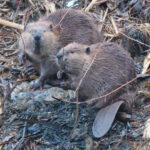What do Beavers eat? The question first came to me several years ago as I was planning a new camera trap project. The objective for this effort would be the recording of some candid Beaver behaviors. I believed I might be able to “prime the pump”—so to speak—if I could leave some bait that the beavers would find attractive in front of my trail cameras. The problem was that I had no idea what to use!
So, off to Google I went with the query posed in the title of this article. What came back left me feeling a little dissatisfied. Back, then most of what I came up with seemed to suggest that the diet of North American Beavers consisted mostly of wood. I was skeptical. It’s common knowledge that Beavers cut down trees by chewing through their trunks, but could wood really also make up the bulk of their diet? Wood is structural; it typically does not have much nutritional value.
Attempting the same Google search today returns answers that are a little bit better. Newer search results contain more information about the beaver’s diet—sometimes including a list of plants—and also a little more context. Here is a current example from Wikipedia…
Beavers have an herbivorous and a generalist diet. During the spring and summer, they mainly feed on herbaceous plant material such as leaves, roots, herbs, ferns, grasses, sedges, water lilies, water shields, rushes and cattails. During the fall and winter, they eat more bark and cambium of woody plants; tree and shrub species used include aspen, birch, oak, dogwood, willow and alder
Wikipedia
Since then, I’ve also found a few YouTube videos that show Beavers in rehab facilities demonstrating a clear—and decidedly greedy—preference for certain types of farm-fresh vegetables. Have a look at the humorous example below…
While videos like this one are certainly informative, interesting, and cute, they only show Beavers feeding on vegetable matter that is not normally found in the wild. The question of what the big rodents prefer to feed on in a more natural setting remained open. Fortunately, over the intervening years I have managed to collect a number of photographs and videos that serve to shed a little more light on the situation. I now have a short list of things I am certain North American Beavers like to eat!
Let’s start with the Black Willow. Beavers in North Texas show a clear preference for these trees. The big rodents have the ability to reduce a stand of willows to mere stumps in short order. Beavers take the trees down with a circular cut around the base of the trunk. And once the tree is on the ground, the hungry Beavers will proceed to strip the main trunk of all the smaller branches they can reach; feeding on the bark and leaves as they go along. A wasteland of stumps and naked tree trunks is often all that is left behind.
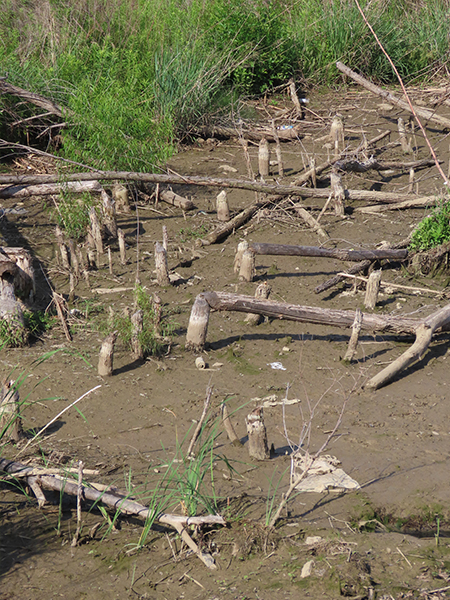
by a family group of hungry Beavers
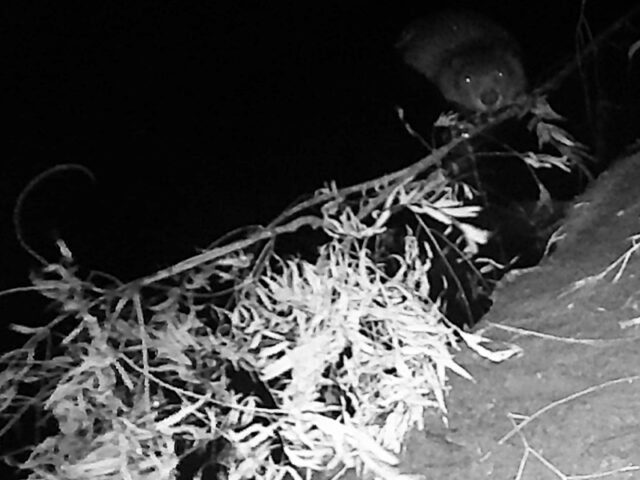
Another favorite food of our local North American Beavers is a plant species known as Pickerel Weed. This green and succulent plant often grows up in and around bodies of water—perfect for hungry Beavers. My trail cameras have recorded Beavers returning time and time again to feed at a spot like the one shown below…

Later in the year, when most of the vegetation has died back or gone dormant, any edible green leafy plant may fill the bill for a hungry Beaver. In the pictures below you will find a Beaver who has left the water in a quest for some leafy greens. I’m not sure what this plant is, but the picture was taken on an icy day in early February, so it is certainly a cold tolerant species.
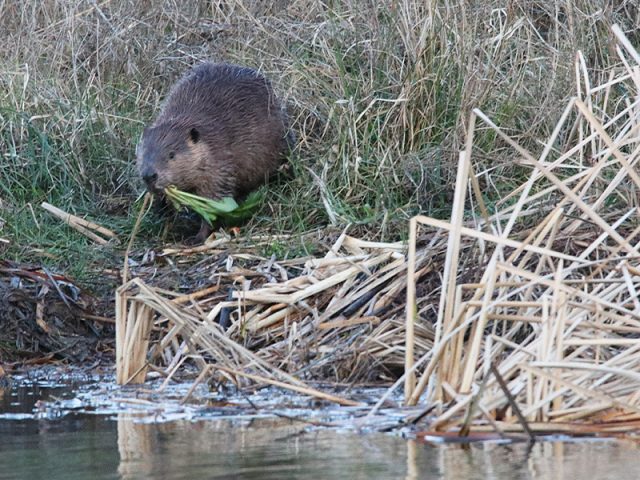
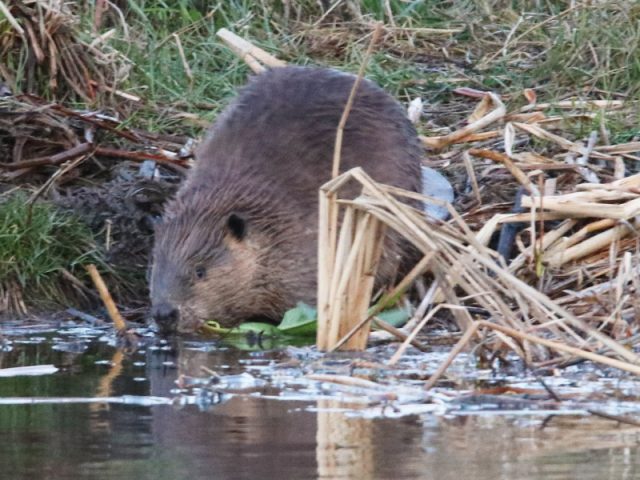
In winter, when much of our native vegetation has died back, Beavers become open to accessing the evergreen Chinese Privet plant to supplement their diet. Privets are an introduced species of plant, and as such are a relative newcomer to the woods of North Texas. The first privets were brought to the United States in the 1700s as ornamentals. Feral examples became naturalized in many parts of the United States over the years between 1950 to 1980. Privets do very well here in North Texas, and can quickly become established in certain parts of our riparian forests. These plants grow tall and spread widely, forming dense stands that can be virtually impassable by casual human explorers.
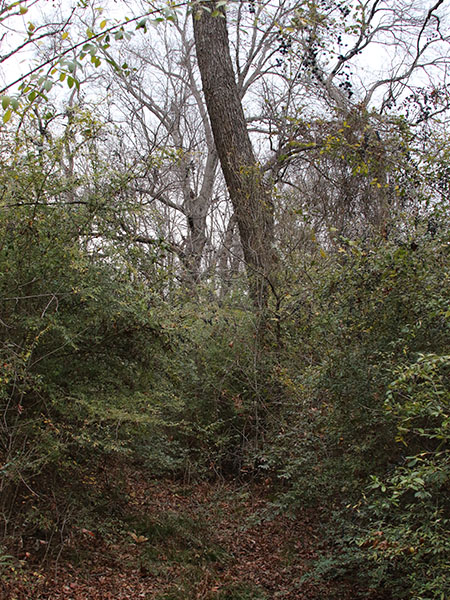
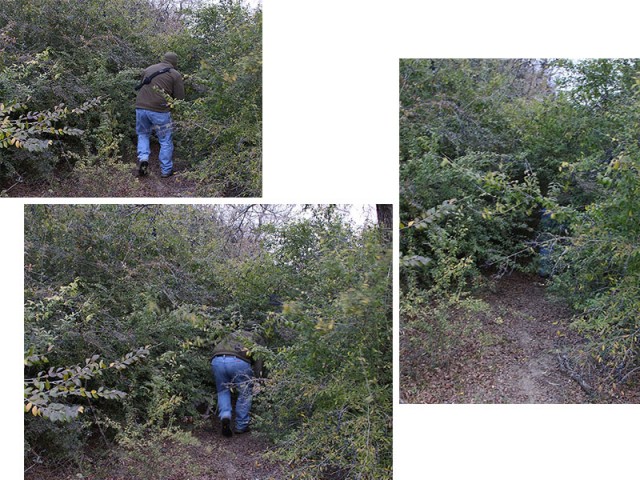
Beavers cut the multi-stalked privet low to the ground, and then feed heartily on the plant’s cambium, which is found just under the bark. In the pictures below you will find the handiwork of Beavers who have engaged in just such feeding behavior. Notice the way the ground is littered with stems and branches denuded of bark and cambium all the way down to the bare wood.
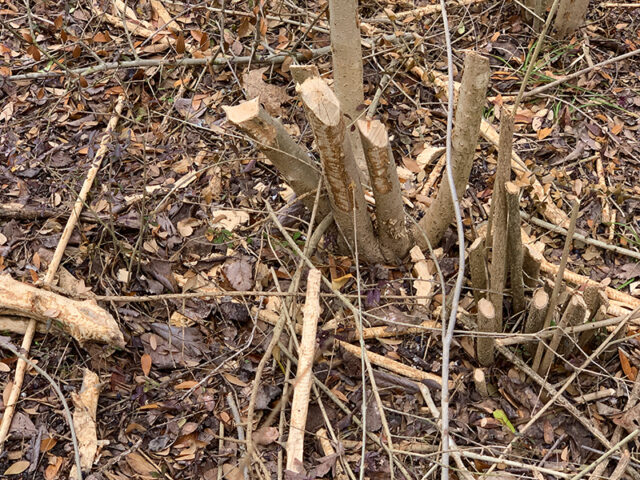

So to recap, we now know that Beavers will eat carrots, lettuce, Black Willow, Pickerel Weed, edible green leafy plants, and even Chinese Privet. And this past summer I was able to add one more plant to the list. In late August, Beavers in North Texas will begin to feed on Giant Ragweed, if it is located conveniently close to their watery home. Apparently, they really enjoy the stuff! See the video below…
Ragweed grows thick in many places around North Texas. Individual plants can grow to be quite large. Stalks approaching 10 feet tall are not uncommon at the end of the growing season. When larges patches of this plant are found in relative proximity to water, Beavers may imbibe.
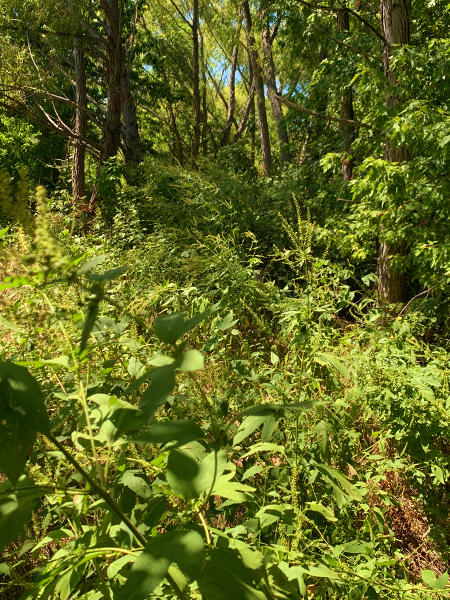
When Beaver feed on Giant Ragweed they can clear a large swath quite quickly. As shown in the video above, Beavers will typically cut the main stalk of the Ragweed plant, and then drag the felled plant back to the water edge in order to feed. In their wake will be a sizable plot of open ground littered with roughly beaver-heigh ragweed stumps!
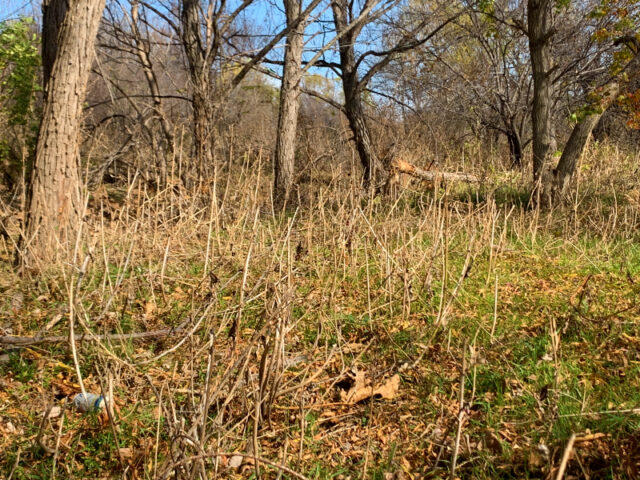
Notice the the felled Black Willow in the background—also the work of busy Beavers




